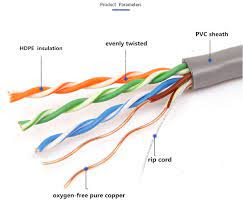Bandung, Telkom University - Setting up your own home lab One of the most frequently asked questions by CCNA and CCNP candidates is, "What cables do I need?" The answer is "it depends". As you can see from the validation studies, the physical layout of your lab dictates the cables you need. Let's take a look at the most common home lab cable types and when you might need them.
Straight through cables are used in some CCNA/CCNP home labs. I need it to connect the switch port to her AUI port on the router (I also need a transceiver for that). If you have an ISDN simulator, you can use a straight cable to connect her BRI port on your router to the simulator. Crossover cables are used to connect switches for trunking. If possible, have two switches in your home lab. This will give you valuable experience in working with root bridge election, working with STP, and creating EtherChannels.
A DTE/DCE cable is used to connect two routers via a serial cable. If you use Frame Relay switches in your lab, you will need multiple switches. Another good way to practice this is to connect the two routers directly and establish a connection (and make sure it stays connected!). This will be valuable practice for your CCNA exam.
Octal cables are used to connect the access server to each of the other routers and switches in the lab.
Finally, there's that precious blue cable, the rollover cable. Rollover cables (sometimes called "rolled cables") allow you to connect a host device directly to a router or switch's console port. These cables have a way of disappearing around an IT shop, so make sure to take one home - and leave it there!


